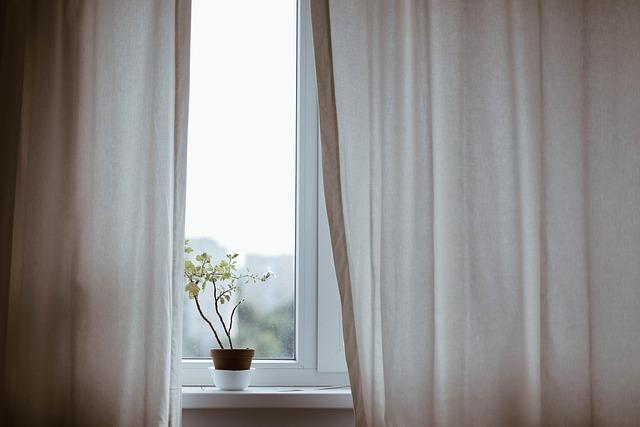In the realm of modern cinema, few films have harnessed the visceral power of sound as effectively as “A Quiet Place.” Directed by John Krasinski, this cinematic marvel transcends traditional horror tropes, weaving a narrative that is as much about silence as it is about sound. The film’s innovative sound design serves as both a narrative device and a character in its own right, meticulously crafting an atmosphere of relentless suspense. By exploring the delicate interplay between silence and noise, “A Quiet Place” offers a masterclass in how auditory elements can elevate storytelling, engaging audiences in a profound, almost primal, sensory experience. This article delves into the film’s groundbreaking sound design, analyzing how it amplifies tension and emotion, ultimately redefining the boundaries of suspense in cinema.
Crafting Silence: The Art of Minimalist Soundscapes
In the realm of sound design, silence becomes a canvas, where every subtle sound is a deliberate brushstroke. Minimalist soundscapes harness the power of restraint, transforming ambient noise into an emotional narrative. This approach requires an acute awareness of what is left out, as much as what is included. By focusing on the essence of sound, designers create an immersive experience that captivates and unnerves the audience.
- Selective Sound Curation: Emphasize specific sounds like a creaking floorboard or distant thunder, allowing them to resonate and build tension.
- Dynamic Silence: Utilize pauses to amplify suspense, letting the absence of sound become a character in itself.
- Spatial Awareness: Manipulate sound placement to create a sense of space and depth, drawing listeners into the environment.
In a minimalist soundscape, the audience is compelled to lean in, heightening their engagement and emotional response. This method is not merely about reducing noise but about crafting an auditory experience that speaks volumes through its quietude.

Building Tension: Techniques in Auditory Suspense
In the art of crafting suspense, sound design becomes a potent tool, particularly in films like A Quiet Place. This film demonstrates how auditory elements can be manipulated to heighten tension and engage audiences on a visceral level. By strategically employing silence, filmmakers create an unsettling atmosphere that compels viewers to hang onto every faint whisper and distant footstep. Silence, paradoxically, becomes a character of its own, intensifying the dread of the unseen threats lurking in the shadows.
Several techniques are employed to build auditory suspense:
- Dynamic Range: By contrasting loud and quiet moments, the film maintains a constant state of alertness, jolting audiences when the silence is broken.
- Minimalist Score: Sparse musical elements allow natural sounds to take precedence, amplifying the realism and immediacy of the characters’ peril.
- Directional Sound: Utilizing surround sound technology, the film directs the audience’s focus, making them acutely aware of the environment and potential threats.
These auditory techniques not only enhance the suspense but also immerse the audience in a world where every sound carries the weight of survival. By manipulating what is heard and what is deliberately withheld, A Quiet Place exemplifies how sound design is integral to storytelling.
Character Development Through Sound: An Intimate Approach
In “A Quiet Place,” sound becomes an intrinsic part of character development, crafting a unique narrative depth. The absence and presence of sound reveal the emotional landscape of the characters. Silence, often overwhelming, becomes a canvas for vulnerability and strength. This innovative use of sound allows audiences to connect with the characters on an intimate level, experiencing their fears and hopes through auditory cues.
- Regan’s Hearing Aid: A symbol of both weakness and empowerment, it shapes her relationship with the world around her.
- Lee’s Whisper: The subtlety in his voice conveys a father’s protective instinct and desperation.
- Nature’s Soundscape: The ambient noises emphasize isolation yet offer moments of solace and connection.
Each auditory element serves as a narrative device, enhancing the suspense while deepening our understanding of the characters’ internal struggles and growth. Through this meticulous sound design, the film transcends traditional storytelling, offering a masterclass in building suspense through auditory experience.

Recommendations for Filmmakers: Harnessing Sound to Elevate Narrative
In crafting a film like A Quiet Place, sound design isn’t just a component—it’s the backbone of the narrative. To elevate storytelling through sound, filmmakers should consider the following strategies:
- Emphasize Silence: Use silence as a powerful tool to heighten tension. The absence of sound can amplify the audience’s anticipation, making even the smallest noises impactful.
- Characterize Through Sound: Design unique soundscapes for each character or setting. This can subtly convey their emotions or signify their presence, enriching the narrative without visual cues.
- Layer Sound Intentionally: Carefully layered sound elements can create depth and texture. Consider how overlapping sounds might interact to guide the audience’s emotional journey.
By thoughtfully integrating these techniques, filmmakers can transform sound from a background element into a dynamic narrative force, as expertly demonstrated in A Quiet Place.

